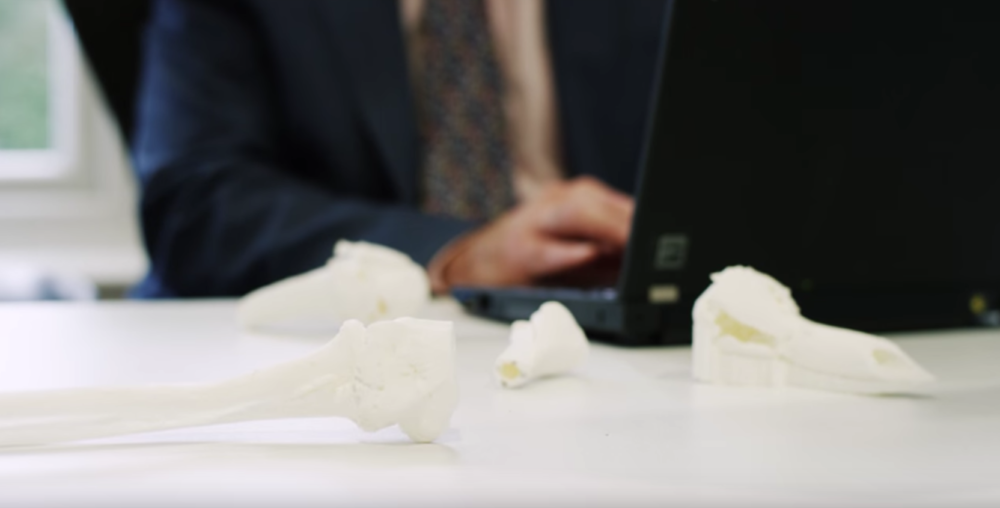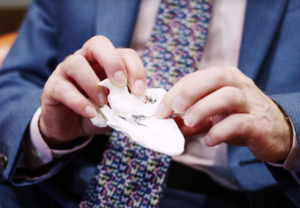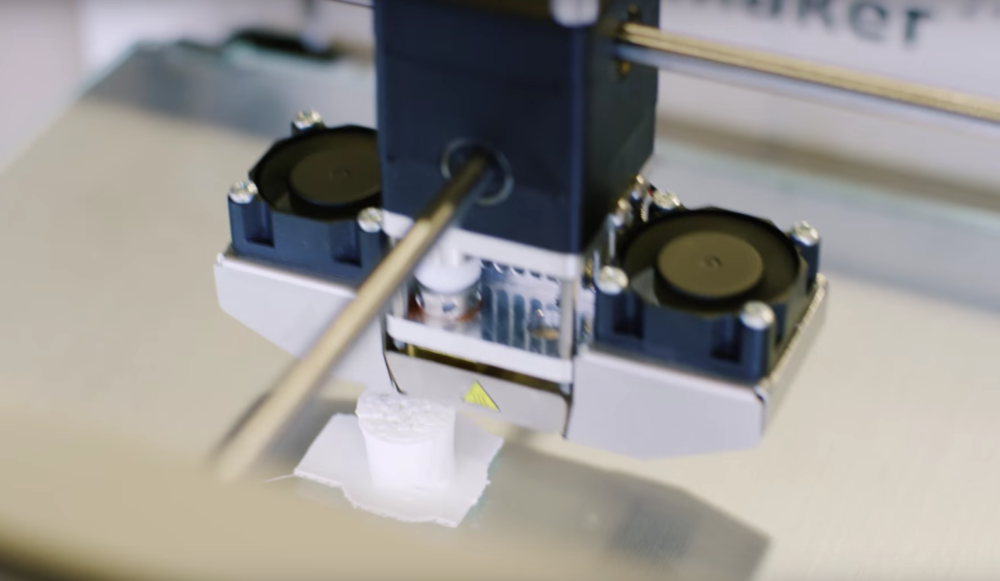One of the fastest growing applications for 3D printing is in the medical industry where doctors are discovering the power of surgical pre-planning using 3D printed replicas of their patient’s body. Doctors have discovered that CT or MRI data can be converted into 3D models and then 3D printed as highly accurate three-dimensional representations of the internal anatomy of their patients’ bodies, especially the areas that need to be operated on. Typically the hospital would use expensive software to create the 3D model and then send it off to a 3D printing service bureau for printing. The process takes anywhere from one to two weeks, which is pretty fast, but not if the doctor has a patient who needs surgery immediately.
However Dutch 3D printer manufacturer Ultimaker and a surgeon from London are making the case for using desktop 3D printers in medical settings. While the resolution of an average desktop printer is probably not high enough to reproduce the complex internal anatomy or organs, it is well suited to 3D printing things like human bones. Not only can the bone be quickly 3D printed on a desktop 3D printer to help patients understand how exactly they are injured, it turns out that 3D printed bones are also excellent tools for helping doctors pre-plan their surgeries. And it can be done quickly, in the doctor’s office, without the need for expensive software or the long wait of sending the model off-site to be printed.
Dr. Boyd Goldie is an orthopedic surgeon who works in a private London hospital and primarily treats upper limb injuries. While a lot of his patients see him for non-emergency elective problems, he often deals with emergency cases where time is of the essence. In these cases, Dr. Goldie simply doesn’t have time to wait for off-site 3D printing so he’s turned to open sourced software to generate 3D models from his patients’ CT scans and an Ultimaker 2+ desktop 3D printer to print their bones. This gives him the ability to see the injury that he needs to repair, and he often keeps the 3D printed model with him during surgery as a reference.
“There’s nothing like holding a model in your hands, thinking about where it is in the body and working out how you’re going to fix the problem. With modern radiology software you can get a virtual model on-screen, but there’s nothing like holding a model in your hands,” Dr. Goldie explains.
With the addition of free open source software available online, Dr. Goldie is able to quickly turn CT scans into 3D model and use his Ultimaker 2+ to have them printed out in a matter of hours. While an on-site desktop 3D printer is probably not going to be able to replace the need for high-resolution 3D prints that are often required for complicated internal surgeries or organ transplants, it can be a valuable tool for the quick and easy visualization of a patient’s injuries. Especially on bones, which can be printed at a reduced size for larger bones, or the 3D model can be broken up into smaller parts because only the affected areas needs to be printed.
“A lot of it is to do with me as a surgeon, helping me to plan my operation, plan where I’m going to make my incision and give me a better understanding of what I’m dealing with so I don’t have any surprises when I come to do the operation,” Dr. Goldie continues.
For Dr. Goldie the results speak for themselves: not only is he able to make more informed choices with his patient care, but he’s able to better educate his patients on their injuries. He says that his patients often ask for a copy of their injured bone to take home with them. While Dr. Goldie is one of first doctors to use a 3D printer in a clinical setting, Ultimaker is anticipating desktop 3D printing could be a popular use for their 3D printers and plans to produce a print guide for the process that Dr. Goldie uses.
You can see some video of Dr. Goldie discussing how he uses his Ultimaker 3D printer below, and check out his story at Ultimaker Stories here. Discuss all of this further in the 3D Printed Bones forum over at 3DPB.com.
Subscribe to Our Email Newsletter
Stay up-to-date on all the latest news from the 3D printing industry and receive information and offers from third party vendors.
You May Also Like
Precision at the Microscale: UK Researchers Advance Medical Devices with BMF’s 3D Printing Tech
University of Nottingham researchers are using Boston Micro Fabrication‘s (BMF) 3D printing technology to develop medical devices that improve compatibility with human tissue. Funded by a UK grant, this project...
3D Printing Webinar and Event Roundup: April 21, 2024
It’s another busy week of webinars and events, starting with Hannover Messe in Germany and continuing with Metalcasting Congress, Chinaplas, TechBlick’s Innovation Festival, and more. Stratasys continues its advanced training...
3D Printing Webinar and Event Roundup: March 17, 2024
It’s another busy week of webinars and events, including SALMED 2024 and AM Forum in Berlin. Stratasys continues its in-person training and is offering two webinars, ASTM is holding a...
3D Printed Micro Antenna is 15% Smaller and 6X Lighter
Horizon Microtechnologies has achieved success in creating a high-frequency D-Band horn antenna through micro 3D printing. However, this achievement did not rely solely on 3D printing; it involved a combination...


































